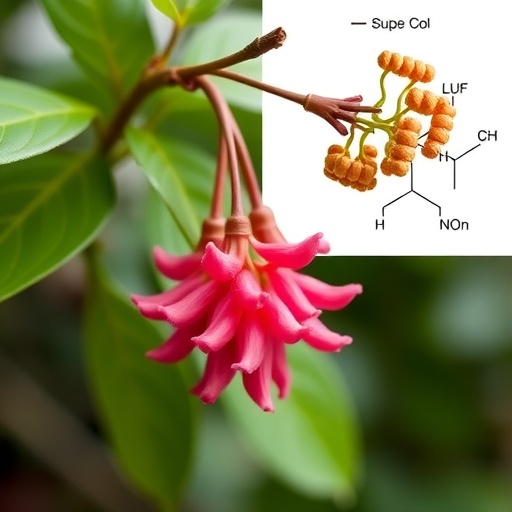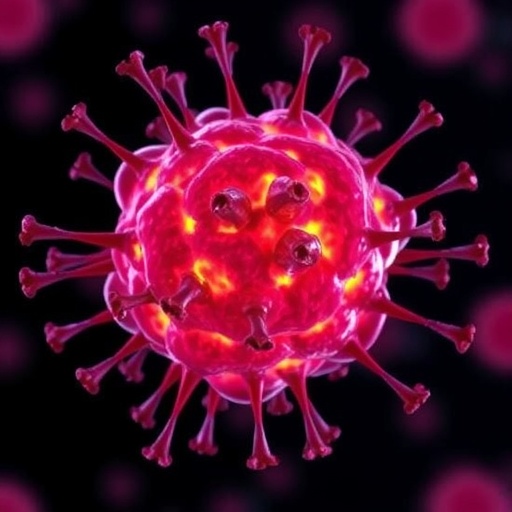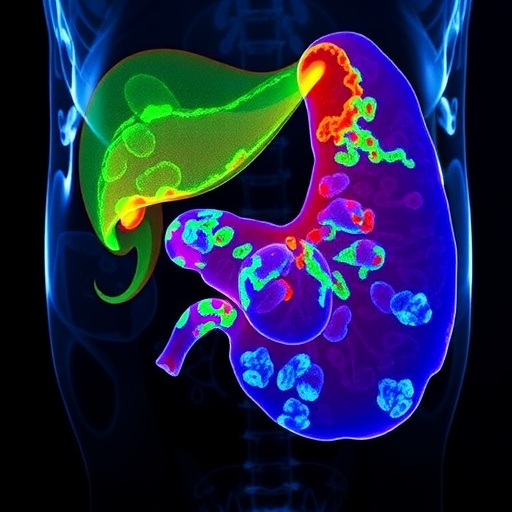In recent years, the medicinal properties of Lycium barbarum, commonly known as goji berry, have captured significant attention within the biomedical research community. Traditionally revered in Chinese medicine for its purported health benefits, recent studies have uncovered compelling evidence of its potential to repair hepatic damage and promote liver regeneration. This multifaceted efficacy renders Lycium barbarum a promising candidate for novel therapeutic applications, especially in the context of hepatocellular carcinoma (HCC), a primary form of liver cancer with limited effective treatment options and poor prognosis.
Hepatocellular carcinoma remains one of the deadliest cancers worldwide, often diagnosed at advanced stages when treatment strategies become less effective. The urgent need for innovative therapeutic approaches has driven researchers to explore natural compounds and their active ingredients as alternative or complementary agents in cancer therapy. Among these, the polysaccharides derived from Lycium barbarum have garnered interest for their anticancer activities, notably their capacity to induce apoptosis selectively in malignant cells without significant toxicity to normal tissues.
Molecular docking, a robust in silico method widely employed in contemporary drug discovery and development, serves as a critical tool in deciphering the interactions between bioactive compounds and molecular targets. By simulating the binding affinity and conformational compatibility of ligands to receptor sites, molecular docking facilitates predictions about potential efficacy, thereby guiding experimental validations. Leveraging this methodology, a recent study aimed to validate the therapeutic potential of Lycium barbarum’s active ingredients against liver cancer by analyzing their interactions with key molecular targets implicated in HCC progression.
.adsslot_YuFZ3QNPEG{ width:728px !important; height:90px !important; }
@media (max-width:1199px) { .adsslot_YuFZ3QNPEG{ width:468px !important; height:60px !important; } }
@media (max-width:767px) { .adsslot_YuFZ3QNPEG{ width:320px !important; height:50px !important; } }
ADVERTISEMENT
The study employed an integrative approach that combined molecular docking techniques with prior insights gained from network pharmacology analyses of Lycium barbarum in liver cancer. Network pharmacology, which maps the complex interactions between drugs, targets, and biological pathways, had previously highlighted multiple proteins and signaling cascades as critical nodes modulated by Lycium barbarum constituents. Building upon these findings, molecular docking was utilized to quantify the strength and specificity of binding between identified active components and core oncogenic targets.
Results from the docking simulations revealed that all examined active ingredients exhibited binding energies below -5.0 kcal/mol, a threshold indicative of favorable binding affinity. Remarkably, the majority demonstrated binding energies exceeding -7.0 kcal/mol, signifying strong and potentially biologically relevant interactions. These data suggest that the bioactive molecules within Lycium barbarum are capable of engaging key proteins involved in hepatocellular carcinoma pathogenesis, potentially disrupting aberrant signaling pathways and contributing to antitumor effects observed in cellular and animal models.
The significance of these findings extends beyond mere binding affinity. The multi-component, multi-target nature of Lycium barbarum illustrates a hallmark of traditional Chinese medicine, wherein a synergistic interplay among various compounds targets an array of molecular pathways rather than isolated targets. This complexity could offer an advantage over single-targeted therapies by reducing the likelihood of drug resistance and improving therapeutic efficacy through simultaneous modulation of multiple oncogenic mechanisms.
In particular, the polysaccharides present in Lycium barbarum have previously been shown to exhibit immunomodulatory effects, enhancing the body’s intrinsic tumor surveillance mechanisms. Coupled with their capacity to induce apoptosis in cancer cells, these properties present a dual mechanism of action aligning well with the multifactorial etiology of hepatocellular carcinoma, which involves not only uncontrolled cell proliferation but also immune escape and fibrosis-related microenvironment alterations.
Further experimental validation remains essential to translate these promising computational results into clinical application. In vitro assays and in vivo models will need to confirm the cytotoxic effects of Lycium barbarum constituents against diverse HCC cell lines, alongside evaluations of pharmacokinetics, bioavailability, and safety profiles. Such comprehensive exploration will help delineate dosage parameters and potential synergisms with existing chemotherapeutic agents, paving the way for clinical trials.
The broader implications of this research also speak to the resurgence of natural product-based drug discovery in oncology. While synthetic small molecules remain dominant, natural compounds such as those derived from Lycium barbarum offer rich chemical diversity and novel scaffolds that can inspire new classes of therapeutic agents. Advances in computational approaches, like molecular docking combined with omics data, accelerate the identification of promising candidates while economizing laboratory resources.
Additionally, by revealing how traditional medicinal plants can influence multiple cancer-related targets, this study contributes to the emerging paradigm of polypharmacology. This approach challenges the one-drug-one-target dogma, advocating for therapies that address the complex, interconnected signaling networks characteristic of cancer and other chronic diseases. Such polypharmacological agents may mitigate adverse effects and improve patient outcomes through heightened specificity and reduced toxicity.
Researchers anticipate that the findings surrounding Lycium barbarum may also stimulate investigations into its constituents’ impact on other cancers and chronic diseases involving aberrant regeneration or immune dysfunction. The translational potential underscores the importance of multidisciplinary collaborations integrating computational biology, phytochemistry, molecular oncology, and clinical science.
In conclusion, the molecular docking study underscores the therapeutic promise of the active components of Lycium barbarum in managing hepatocellular carcinoma. By demonstrating strong binding affinities to multiple core targets implicated in liver cancer, the research validates traditional knowledge while providing a scientific basis for future drug development efforts. This integrative strategy of leveraging ancient herbal wisdom through modern computational tools exemplifies a fertile avenue to expand and enrich the therapeutic arsenal against challenging cancers.
Subject of Research: Therapeutic effects of active components of Lycium barbarum on hepatocellular carcinoma using molecular docking analysis
Article Title: Verify the Therapeutic Effect of Effective Components of Lycium Barbarum on Hepatocellular Carcinoma Based on Molecular Docking
News Publication Date: 30-Mar-2025
Web References:
Oncology Advances Journal
DOI Link
Keywords: Liver cancer, Pharmacology, Hepatocellular carcinoma, Molecular docking, Lycium barbarum, Natural compounds, Anti-cancer therapy, Polysaccharides, Apoptosis, Network pharmacology
Tags: bioactive compounds interactionsgoji berry health benefitshepatic damage repair mechanismshepatocellular carcinoma treatmentin silico methods for drug developmentinnovative cancer treatment approachesLycium barbarum medicinal propertiesmolecular docking in drug discoverynatural compounds in cancer therapypolysaccharides anticancer activitiesselective apoptosis in cancer cellstherapeutic applications of traditional medicine





